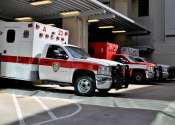Pathomechanisms in heart disease discovered
Titin is a "titanically large" protein—the largest in the human body—which enables elastic movements of our muscles, including the heart. Mutations in the titin gene (TTN) that impair this function are the most frequent ...
Nov 5, 2021
1
23









